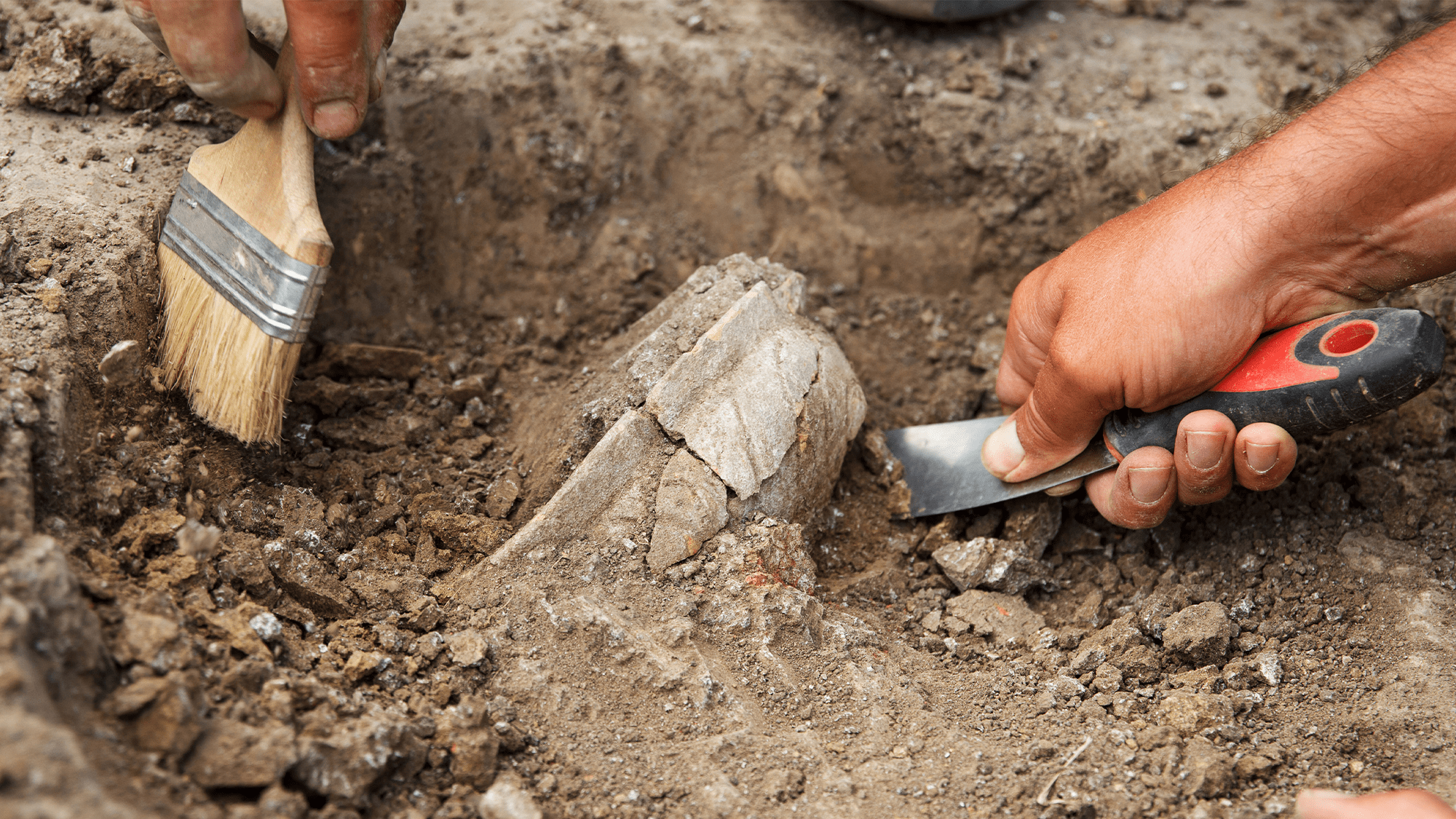

A 300,000 year-old fossilized skull discovered in China is proving to be an evolutionary puzzle. The specimen dating back to the late middle Pleistocene doesn’t look like other skulls that have been found from this time period, and could possibly point to a previously unknown human species. The findings were published late last month in the Journal of Human Evolution.
[Related: Leftovers of a 2,000-year-old curry discovered on stone cooking tools.]
A team of scientists from institutions in Spain, the United Kingdom, and China found the lower jaw–or mandible–and 15 other separate specimens in eastern China’s Hualongdong region in 2015. The mandible in question is named HLD 6 and dates back to an important period in hominin evolution, just before some of the traits that are still seen in modern humans began to evolve in East Asia.
The study noted that HLD 6 was “unexpected” since it doesn’t currently fit into any known taxonomic groups. The skull has similar facial features to those of early modern humans. The skull could potentially belong to a direct human ancestor called Homo erectus sometime between 550,000 and 750,000 years ago.
However, it also shares some of the characteristics of the Denisovans, who belong on a different branch on the human family tree than Homo Erectus. HLD 6 does not appear to have a chin, just like previously discovered Denisovan specimens. Denisovans are now extinct and split from Neanderthals about 400,000 years ago.

Given that the specimen has a mixture of Homo erectus and Denisovan characteristics, they believe this was potentially a hybrid of modern human and ancient hominid. The team notes that this combination of facial features hasn’t been observed in East Asia hominids, which suggests that some of the traits found in modern humans began to appear as far back as 300,000 years ago.
[Related: A javelin-like stick shows early humans may have been keen woodworkers.]
They believe that the fossils belonged to a 12- to 13-year-old child. The team did not have an adult skull belonging to this same species to compare it with, but they used Middle and Late Pleistocene hominin skulls of similar and adult age. They noticed that the shape patterns remained the same regardless of age, which they say supports the theory that this could be a different human species.
The history of the human family tree is constantly changing, as scientists develop better techniques for finding and analyzing specimens. A study published in June proposed that humans entered the forests of Asia about 400,000 years earlier than they previously believed. Humans and Neanderthals also could have been interbreeding earlier and in three separate waves that eventually led to the extinction of Neanderthals.
If this new theory proves to be correct, a new “pre-sapiens specimen” branch could be added to this complex family tree and bring more insight into human evolution.
